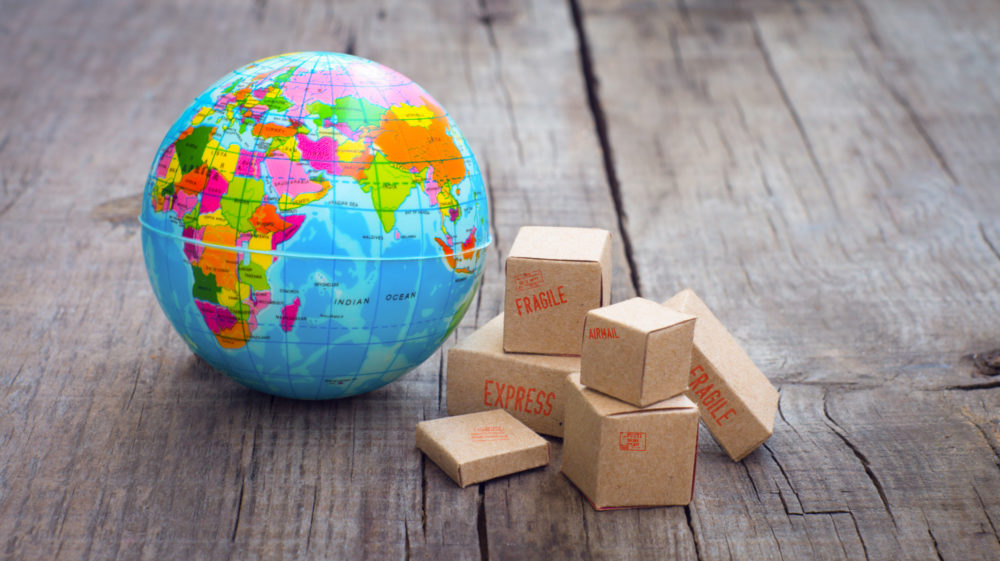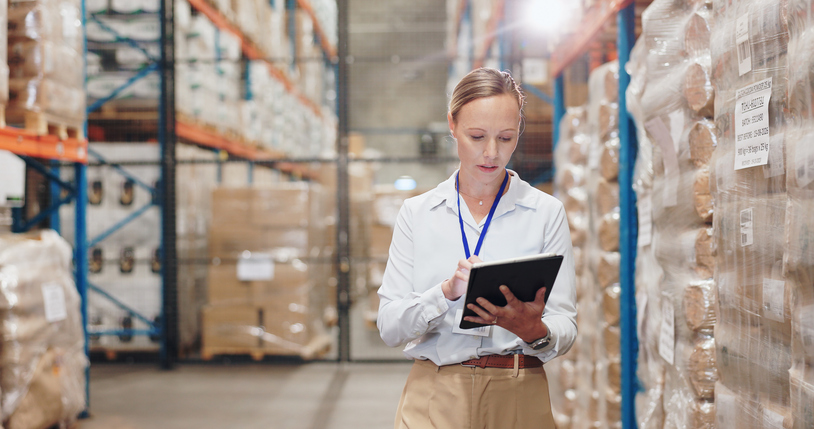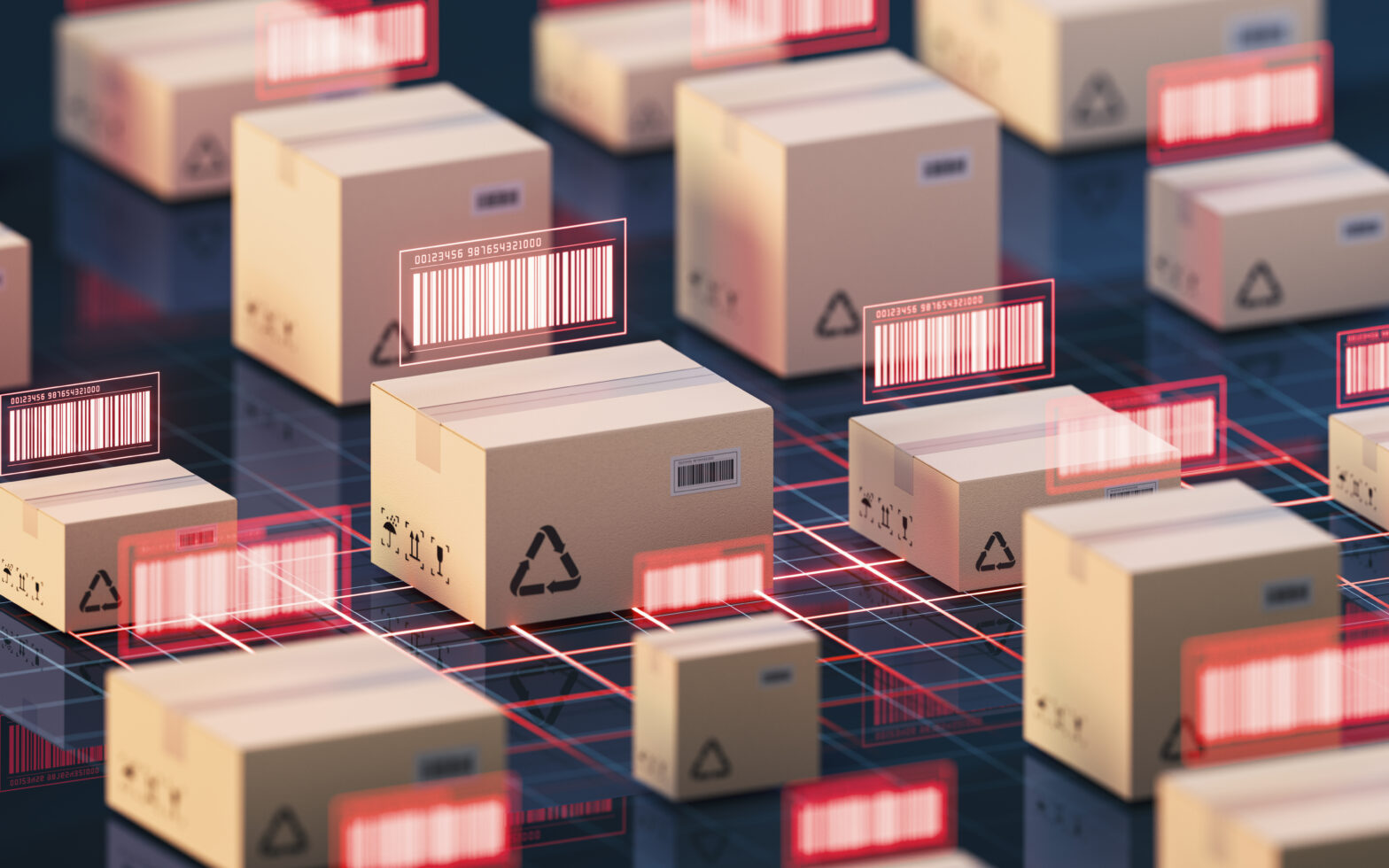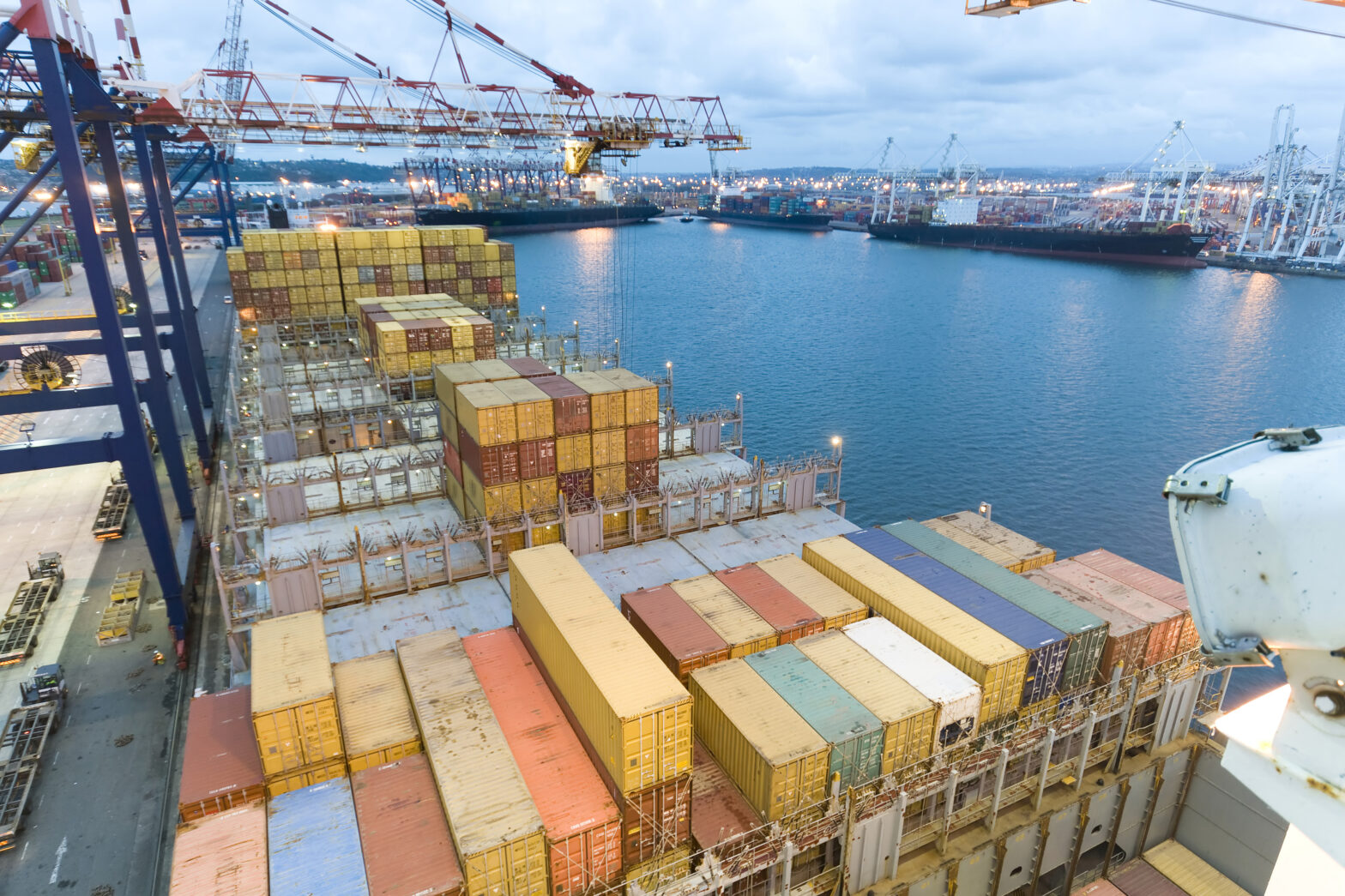The UK having left the EU with the subsequent transition period, along with the effects of Covid-19, have caused higher levels of volatility in trade statistics when it comes to import and export over the past two years.
The value of imports of goods and services to the UK, excluding precious metals, totalled £39bn for June 2021, up £1 billion (2.6 per cent) from the month prior.
The trends are clear – importing is big business.
However, importing to the UK can be complicated and costly – particularly in a post-Brexit world, where trade with the EU today is a whole different ball game to this time last year.
>See also: How to import from China to UK
Imports from non-EU countries have now outpaced. Still, Germany, the Netherlands and France represent three of the UK’s five biggest exporters, so getting up to speed with the new EU/UK trade agreement will be essential for many broaching the vast world of imports.
Getting started can feel like a challenge – but it could be a great way to grow your business.
Whether importing from the EU or further afield, this guide can help you understand the decisions you’ll need to make along the way to make importing a winning strategy for your business.
Three key considerations for importing
Just starting out? Here are some key questions and considerations to prioritise in order to get your new import business off to a good start.
#1 – Should you use a specialist?
Importing can be a complex and daunting process. Luckily, there are several options if you want to bring a specialist onboard to support you.
Freight forwarders
Freight forwarders are specialists in international logistics and can arrange the transport of your goods from their point of origin right to your door. Many freight forwarders also offer customs brokerage (more on that below) – meaning they will handle everything from collecting the shipment from your supplier to delivering it to your store or warehouse in the UK.
Freight forwarders will use a network of local transport and logistics providers to move your products, wherever in the world they start out. This can be especially helpful if you don’t yet have local contacts where your supplier is based. It also means that you will only deal with one person to manage all the details of your shipment, removing much of the stress.
Freight forwarders do charge for their services – but, as they can also negotiate bulk rates with cargo companies, airlines and ports – there are also savings to be made along the way.
Customs brokers
The role of a customs broker – sometimes referred to as an import broker – is to help set up the customs documents and licences you may need for importing into the UK. They’ll make sure you have everything you need to clear customs smoothly and even deal with authorities on your behalf, helping you to avoid delays, as well as possible fines and fees if you fail to comply with customs requirements.
If you’re considering using a customs broker, you might choose a standalone agency which offers customs services only or use a freight forwarder which also covers customs processes.
Before you decide, it’s worth getting several itemised quotes so that you can see what different providers can offer for your specific circumstances. Make sure you’re clear on exactly what you’re paying for. And make sure you trust your broker.
With all the post-Brexit changes to VAT and duty, there are huge benefits to using customs and VAT experts, from managing your customs clearance end-to-end to keeping you on the right side of new and evolving legislation.
ChannelPorts’ CustomsPro is one example of a digital customs clearance platform simplifying the process for SMEs, hauliers and freight forwarders. With full automation and customs specialists acting as quality controllers instead of data entry clerks, customers can get their declaration in as little as 10 minutes, instead of up to 12 hours.
CustomsPro also offers unlimited free documentation management – an important feature in light of HMRC’s advice that organisations keep six years’ worth of customs records on file.
>See also: Import from USA: tips and how-to guide
#2 – Can you cut costs when paying for your goods?
Trading internationally means that the world is your oyster. You can find suppliers – and customers – all over the globe.
However, the process of importing products can be costly. You’ll need to take into consideration not only the price of goods, but transportation costs, fees charged by outsourced service providers and charges levied by government agencies for export/import duty and VAT.
While some charges are inevitable, there are areas in which you can cut costs to protect your bottom line.
Take paying for the goods themselves.
If you pay your overseas supplier’s invoice through a regular bank transfer, there will be fees and costs added – and the exchange rate your bank gives you might not be the best available. These added costs are frustrating – yet many can be avoided with a little research.
Foreign exchange platforms can offer savings on international payments by offering the real, mid-market exchange rate and requiring just a small upfront fee for each transfer. Such platforms are regulated by the FCA and have millions of customers around the world.
>See also: Importing from India
#3 – Transporting goods – what are your options and which is best?
Your major cost is likely to be in transporting your goods to the UK. You have several options to choose from.
Air freight
Air freight is typically used when transporting small, high value items – or things which are urgently required. Goods can be placed in the hold of a regular passenger aircraft, or in a specially designed freight plane.
There are several options, from buying a small amount of freight space on a regular flight, to chartering an entire plane yourself. The costs are typically high, but it’s much quicker to move goods by air than by sea or road.
Prices are calculated based on weight primarily, and then value and volume of goods, as well as the distance of the origin port.
It’s helpful to know that the cost of import duty to the UK is calculated on the cost of goods and possibly the cost of transportation.
Sea freight
Sea freight is often used when importing consumer goods to the UK from the Far East. It’s perfectly suited as it’s a relatively cheap way to move large volumes of product around the world.
Most importers choose to take either a full container – which could be 20 to 40 feet long – or to share space in a container with other shipments, for smaller quantities. It takes several weeks for sea freight to reach its destination, but the cost is significantly less than using air transport – some four to six times cheaper on average.
The costs associated with sea freight are usually worked out based on volume rather than weight and they factor in the type and value of the items being shipped.
Sea freight is better suited to large volume shipments, over about 100kg. In this case, the costs of sea transport tend to be significantly cheaper than any other method.
Rail
Rail transport is a cost-effective choice in some areas. European rail services are frequent, fast and comparatively environmentally friendly – but usually more expensive than road haulage, and less flexible, which can be an issue for importers.
You’re also likely to need further transport to move goods from the original supplier to a rail depot, and from your destination depot to your warehouse. This can add complexity and cost.
Road
Moving goods by truck is a flexible option within Europe. The road network is good, and using trucks means that it’s easy to move large volumes of merchandise.
Costs are reasonable, but you must take into account tolls and fuel prices, which can be high. There are also some risks – longer journeys mean more chance that congestion or other disruption will cause an issue, and road transport can result in more damage to goods than air freight. Road haulage is often used in conjunction with sea freight to move items longer distances at a good price.
That said, the UK’s ongoing shortage in qualified lorry drivers following Covid-19, tax changes, pay decreases and Brexit, has seen road haulage become a problem for regional supply chains.
Use this import guide
When importing to the UK, there are a number of steps you’ll need to follow. Your freight forwarder or customs broker – if you choose to use one – can pick up some of these tasks on your behalf.
Don’t forget, there will also be processes to follow at the point of origin. For example, declaring exported goods to local authorities where your supplier is based. These vary by location, so you’ll need to get specialist advice once you’ve chosen a supplier.
At the UK end of your import, you will need to do the following:
- Register for an EORI number (if you don’t have one already) – this shouldn’t take more than three working days to arrive
- Understand the terms of sale, or Inco Term as it is commonly known; this will dictate the responsibility of both the seller and the buyer
- Get the right commodity code for your goods, which may require you to apply for a BTI ruling. This can take time, so plan ahead
- Check if you need any import licence for your goods and apply if necessary
- Arrange transport
- Declare your goods to customs – or have a freight forwarder or customs broker do this on your behalf
- Pay any required duty or VAT before your goods will be released by customs authorities
- Depending on what you’re importing, you may be able to subsequently reclaim some or all of the VAT paid
Requirements for importing in the EU vs non-EU countries
While importing standards have previously varied for UK traders depending on whether they were trading in or outside the EU, the result of Brexit is that the EU has now been brought in line with the rest of the world.
We have laid out all the requirement and their similarities in a checklist below:
Import standards
| Requirement | EU & Rest of World |
|---|---|
| Commodity codes | Yes |
| VAT | Yes |
| Import licence | For certain items |
| EORI | Yes |
| Declare | Yes |
| Duty | Depends on origin of goods |
Commodity codes for UK imports
A commodity code provides details of the goods you’re importing, such as what they are, what they’re made of, how they’re used and even how they’re packaged. This information is used for tracking imports into the country, and making sure that hazardous items are properly treated, but also for calculating import duty and VAT.
To import anything into the UK, you’ll need to make sure the right commodity code is included in its customs declaration. If you can’t correctly match your goods to the right code, you’ll be paying the wrong duties – risking serious legal consequences including top-up taxes and fines – and delaying deliveries to frustrated customers.
You can find the correct commodity code using the online trade tariff lookup tool. Alternatively, you can get specific advice from HMRC, or use the Government-issued product classification guides to help.
VAT
There are some differences to the way VAT is applied on imports coming from the EU compared to those from outside of the EU. Brexit has caused some changes to the way VAT on EU imports is managed.
Paying VAT on imports outside of the EU
If you are importing from outside of the EU, you’ll pay VAT at the prevailing UK rate on most goods – currently 20 per cent. However, you might be able to get a reduced rate of VAT on some items, such as works of art. If you’re importing items but intend to export them again within two years, you may also be entitled to reduced VAT, or even complete VAT relief on your imports. Finally, you might have different VAT payment requirements if you’re importing things like vehicles or boats.
There are also several situations in which you’ll be able to claim the VAT back as a refund – namely when the VAT paid is on goods and services purchased for use in your business. If a purchase is also for personal or private use, you can only reclaim the business proportion of the VAT. You must keep records to support your claim and have valid VAT invoices.
Paying VAT on EU acquisitions
As of 1 January this year, businesses importing goods valuing above £135 from the EU to the UK will have to account for import VAT.
The VAT is applied at the point the goods are to enter free circulation – the VAT tax point. It can be paid then and there, though most businesses are likely to make use of the postponed VAT accounting system (PVA).
EORI
EORI stands for Economic Operator Registration and Identification. Any individual or business involved in importing or exporting within the EU must have an EORI number. If your business is VAT registered, you might even have an EORI number already, as it’s often generated automatically when you register for VAT. If not, you can apply online for an EORI number, and get it within just a few days.
As of 1 January this year, you’ll always need to declare your EORI number – whether importing from within or outside of the EU.
Import declarations
If you’re importing from the EU or a third country, you’ll need to complete an import declaration. The main document used is known as C88 in the UK, or SAD elsewhere – single administrative document.
It’s quite complicated to complete the required import declarations – one of the reasons many importers choose to have a freight forwarder or customs broker deal with this aspect of the process on their behalf.
Paying duty
Whether or not you need to pay duty will depend in part on where your goods originated. You can check the duty payable using your commodity code, on the UK government website duty calculator.
In the UK, duties are payable to HMRC and they are calculated based on the commodity code.
The establishment of the EU and UK Trade and Cooperation Agreement means that zero tariffs are applicable on trade between the UK and EU provided that goods meet certain rules of origin.
More resources
Importing into the UK involves quite a few different steps. There can be a lot to learn, and it can feel a little daunting at first. However, there are plenty of resources out there to help – from the advice and guides available online and from the UK government, to the services of specialists like freight forwarders and customs brokers. Get some experienced help on your side and you’ll find it a lot easier to navigate the UK import and export processes.
Tom Sommer is development director at ChannelPorts





